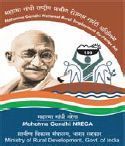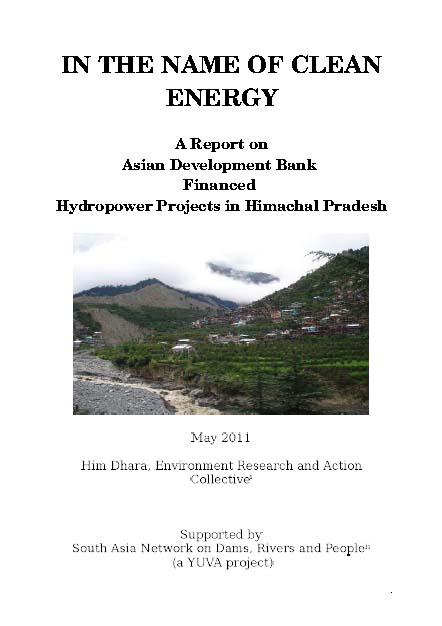News and Articles
Report of the workshop on High resolution cartosat satellite data
Posted on 04 Jun, 2011 01:01 PMIntroduction
Irrigation development is essential to ensure water and food security on a sustainable basis. Large scale development of irrigation infrastructure is the key to achieve these objectives. Accelerated Irrigation Benefit Program (AIBP) was launched by Government of India during 1996-97 to provide financial assistance to State Governments with the aim of speeding up the implementation of on-going irrigation / multi-purpose water resources projects. Monitoring of the projects covered under the AIBP is periodically done by the Central Water Commission / Ministry of Water Resources with the help of its regional offices situated all over the country. In the absence of real time maps during construction, the conventional monitoring is done through discussions with field authorities and random field checks. The monitoring reports with non-spatial information generally lack in the synoptic view of the critical gaps and the quantitative progress achieved in irrigation potential creation.
The availability of data from Cartosat - 1 and Cartosat - 2 high resolution satellites has enhanced the scope of infrastructure mapping and monitoring. This data has immense potential for assessment of progress of Irrigation works and closer visualization of spatial irrigation network.
Upward revision of incentive amount for construction of individual household latrine under Total Sanitation Campaign - PIB Release
Posted on 04 Jun, 2011 11:11 AMThe incentive for one unit of Individual Household Latrine (IHHL) has been raised from existing Rs. 2,200 (Rs. 2,700 for difficult and hilly areas) to Rs. 3,200 (Rs. 3,700 for difficult and hilly areas). The central share out of this shall be Rs. 2,200 (Rs. 2,700 in case of hilly and difficult areas) and State Government share shall be Rs. 1,000. Minimum beneficiary share shall be Rs. 300. State Governments are allowed the flexibility to provide higher incentive for a household toilet, of the same or higher unit costs from their own funds.
Volunteering at the Vembanad fish count 2011 - An Arghyam field report
Posted on 04 Jun, 2011 12:00 AM
Guest post by Priya Desai
Background
This was organised by the Ashoka Trust for Research in Ecology and the Environment (ATREE). Held on May 26th 2011, we were joined by around 150 to 200 student volunteers from various higher educational institutions in Kerala, such as the Kerala University of Fisheries and Ocean Studies, St. Albert's College in Ernakulam, School of Applied Life Sciences in Chuttippara and the School of Environmental Sciences, Mahatma Gandhi University.
Bhoo Jal Sangrah Dohavali (Groundwater recharging - A creation of poems in Hindi) by Awadesh Nema
Posted on 02 Jun, 2011 12:59 PMIt is an innovative version, and has been appreciated in many seminars and national workshops. It gives a logical treatment of mother earth based on human therapy.
For more information, please visit Awadhesh Nema's Blog.
Hkw&ty laxzg nksgkoyh
ty laxzg.k orZeku le; dh lcls cM+h ekax gS A ty dh izR;sd cwan dk laxzg.k vko';d gh ugha cfYd ,d vfuok;Zrk gksrh tk jgh gS A ty laxzg.k dk ;g iz;kl lekt ds izR;sd O;fDr ds }kjk fd;k tkuk pkfg;s A ty laxzg.k gsrq lekt dks tkx`r djus dh rFkk mUgsa blds fofHkUu mik;ksa dks le>kus dh ije vko';drk gS A ;fn lekt dk izR;sd O;fDr ty laxzg.k ds fofHkUu rduhdh rjhdksa ls voxr jgsxk rks og mUgsa vklkuh ls viuk ldsxk vkSj lekt ds fgr esa rFkk Lo;a ds fy;s Hkh ty laxzg.k ds bl ;K esa viuk ;ksxnku ns ldsxk A
Decentralised sustainable approach to sewage and waste water treatment for urban India
Posted on 31 May, 2011 03:17 PMthe small ponds, the lakes, the rivers flows into backwaters, the sea, and the wells catching the abundant rain water enabling such vegetation and greenery all around……
Water – also the factor, which brings the biggest of problems to urban life –
- mosquitoes,
- bad stench from clogged dirty canals,
- floods and water logging especially in the monsoons,
- roads breaking up because of poor drainage,
- drinking water scarcity in many parts of the city,
- water borne diseases and health problems
Flouride problem in Guttavarepalle village, Madanapalle, Andhra Pradesh - A field report by Arghyam and Outreach
Posted on 31 May, 2011 12:07 PM
Overview
It is surprising that fluoride was found even in surface water bodies like ponds, because fluoride is generally found in deep aquifers. Fluoride is a naturally occurring mineral in the deeper layers of rock beneath the earth's surface, so it was unusual to find it at such high levels even in surface water sources, leading to the conclusion that intensive agriculture in the area has spread the fluoride to the surface.
Using the metro lines in Bangalore for rainwater harvesting - Article by S Vishwanath
Posted on 27 May, 2011 12:29 PMAs the elevated tracks come up over the city a mass transport network called the metro is being built all over the city. In phases it is likely to cover over a 100 kilometre and become one of the prime modes of transport to the city. Apart from the transport benefits it will bring to the city there is one other potential benefit that could accrue to the city due to its construction.
The metro rail track offers a tremendous potential for rainwater harvesting. A total length of about 45 kilometres and a width of about 12 metres mean that the endowment of rainwater on the relatively very clean track with Bangalore’s rains of 970 mm annually is about 523 million litres. Considering a coefficient of runoff of 0.90 the harvestable rainwater is around 471 million litres annually. This could provide about 13,000 people with their annual requirement of water at 100 litres per day. A substantial sum.
"NREGA implementation in State not satisfactory": MGNREGS News updates compiled by FES (16 - 30 April 2011)
Posted on 27 May, 2011 12:11 PM
Main highlights in this update:
- NREGA implementation in State not satisfactory: The report card on implementation of Mahatma Gandhi National Rural Guarantee Act (MGNREGA) is a mix bag for Assam, with at least 62 per cent households being provided employment under the flagship schemes, while ombudsman has not been constituted for any district and State fund.
Guidelines for rainfed area development programme - Document prepared by Department of Agriculture and Cooperation (2011)
Posted on 27 May, 2011 07:47 AMRainfed areas account for nearly 57 per cent of the agricultural land in India. These areas assume special significance in terms of ecology, agricultural productivity and livelihoods for millions. With proper management, rainfed areas have the potential of contributing a larger share to food grain production.
In the name of clean energy – A report on Asian Development Bank financed hydropower projects in Himachal Pradesh
Posted on 25 May, 2011 07:06 PM This report by Him Dhara, an environmental research and action collective, deals with the Asian Development Bank financed hydropower projects in Himachal Pradesh, which are leading to obstruction of the rivers and their consequent disappearance for harnessing energy and making ‘judicious’ use of the water. Within the hydro sector the attention has turned to the Indian Himalayan region which is estimated to have seventy nine per cent of the total hydropower potential of the country.
This report by Him Dhara, an environmental research and action collective, deals with the Asian Development Bank financed hydropower projects in Himachal Pradesh, which are leading to obstruction of the rivers and their consequent disappearance for harnessing energy and making ‘judicious’ use of the water. Within the hydro sector the attention has turned to the Indian Himalayan region which is estimated to have seventy nine per cent of the total hydropower potential of the country.
The technology of ‘run of the river’ (ROR) used to tap “the flow of rivers” in high gradient zones to generate power has given impetus to setting up of hydro-projects in the Himalayan states. In India, the mountainous region of the Himalayas offered the “perfect setting” for such projects, with the availability of several flowing water sources that could be tapped before they reached the plains. Of the Himalayan states, after Arunachal Pradesh, Himachal Pradesh is second in line with a hydropower potential of about 21000 MW. The installed capacity has increased twenty fold (from 326 MW to 6370 MW) in the last ten years indicating the frenzied pace of hydropower development in the state.